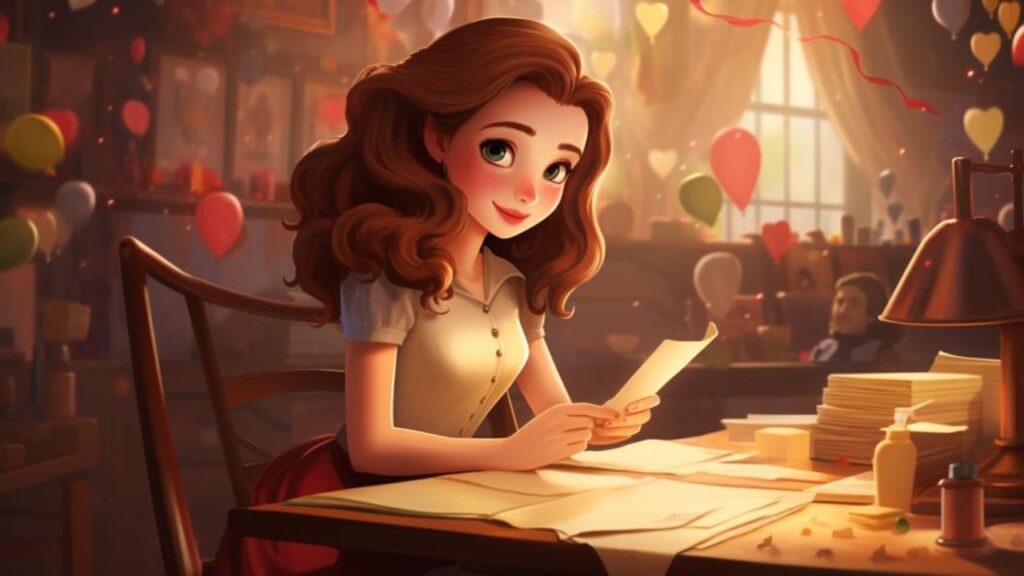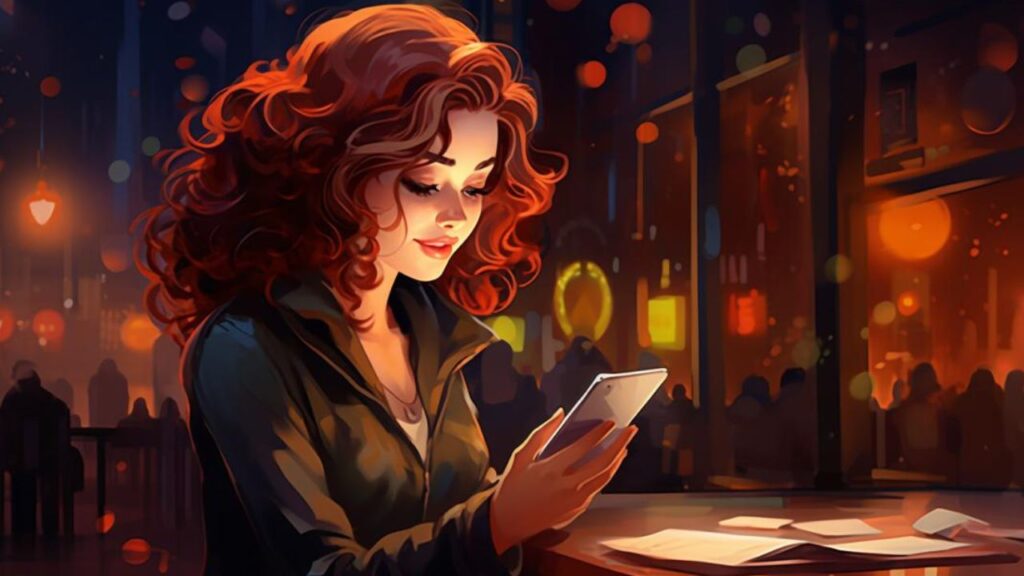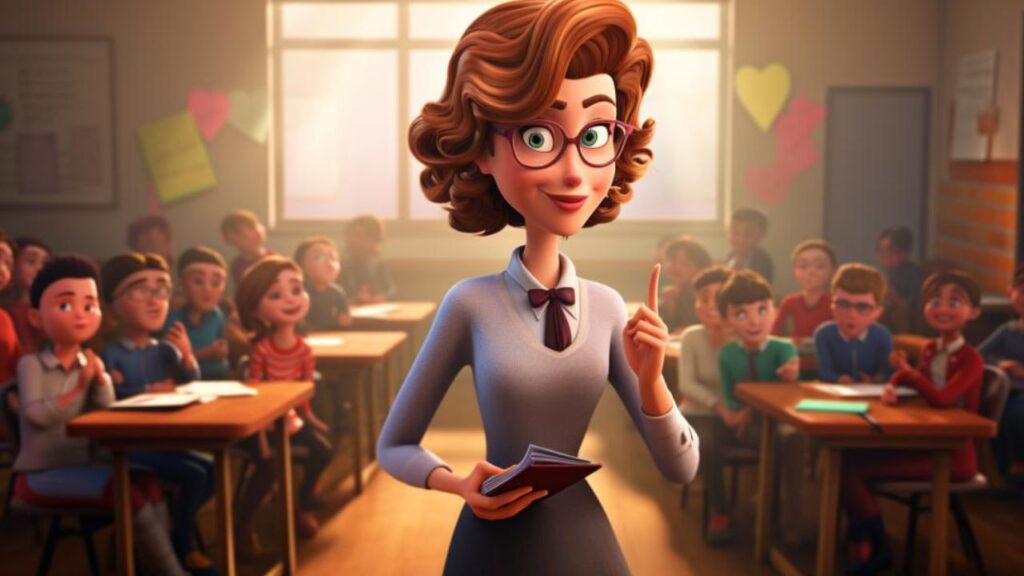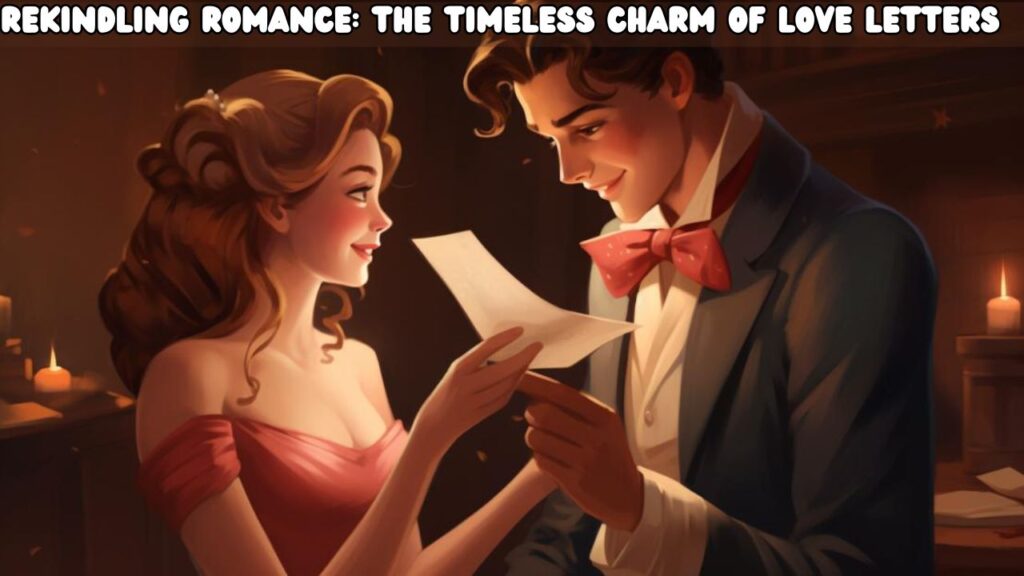Understanding Love Letters: More Than Just Words

In this section, we delve into the essence of love letters, exploring their significance as a profound form of human expression. Love letters do more than convey messages; they are a unique language of the heart, a testament to love’s presence in literature and history, and a reflection of the psychological depth inherent in written expressions of love. Let’s explore these dimensions in detail.
The Language of Emotion
Love letters are the canvas where emotions are painted in words. They transcend the ordinary bounds of communication, venturing into the realm where feelings are both unearthed and celebrated. Through a love letter, what is often unspoken finds a voice. It becomes a medium where emotions such as love, longing, vulnerability, and passion are not just expressed, but are felt deeply by both the writer and the recipient. This language of emotion is what sets love letters apart from other forms of communication, making them a timeless and deeply personal artifact of human connection.
Love Letters in Literature and History
The tradition of love letters is richly woven into the fabric of our literary and historical heritage. These letters have not only shaped personal narratives but have also provided cultural and historical insights into various eras. From the passionate exchanges between famous literary figures to the tender, heart-wrenching notes of separated lovers, love letters have been a potent force in both expressing and documenting love. They hold a mirror to the societal norms and personal sentiments of their times, allowing us to understand the universality of love across different epochs.
The Psychology Behind Written Expressions of Love
There is a profound psychological dimension to writing and receiving love letters. This process of articulating feelings on paper requires a level of introspection and vulnerability that is deeply cathartic. It’s an exercise in emotional clarity and honesty. For the recipient, a love letter is a tangible manifestation of affection and thoughtfulness. It can significantly impact their emotional well-being, reinforcing feelings of love, appreciation, and connection. In our increasingly digital world, understanding and embracing the psychological benefits of this tangible form of expression becomes even more vital.
Why Love Letters Have Faded: A Modern Perspective

In our journey to understand the decline of love letter writing, it’s crucial to consider the societal and technological shifts that have influenced how we communicate affection. This section delves into the factors contributing to the fading practice of writing love letters, examining the rise of digital communication, the fast pace of modern life, and the consequent loss of personal touch in relationships.
The Rise of Digital Communication
One of the most significant factors contributing to the decline of love letters is the advent and dominance of digital communication. With the emergence of emails, instant messaging, social media, and texting, the way we connect and communicate has undergone a radical transformation. These digital tools offer speed, efficiency, and convenience, allowing people to communicate instantly across vast distances.
However, this convenience comes at a cost. Digital messages often lack the depth, thoughtfulness, and personalization inherent in a handwritten letter. The tactile experience of holding a letter, seeing the unique handwriting, and sensing the effort behind it is absent in digital communication. As a result, while we are more connected than ever before, our communications can sometimes feel superficial and fleeting, lacking the enduring emotional impact of a physical letter.
The Fast Pace of Modern Life
Modern life is often characterized by its fast pace and high demands on our time. Many people find themselves caught in a relentless cycle of work, responsibilities, and social obligations, leaving little room for the thoughtful and reflective process of writing love letters. The act of sitting down with pen and paper, collecting one’s thoughts, and composing a heartfelt message requires a level of time and mental presence that is increasingly scarce in today’s fast-paced world.
This time constraint has led to a preference for quicker, more efficient forms of communication. In a society where instant gratification is often the norm, the slow, deliberate nature of writing a love letter can seem outdated, if not impractical.
The Loss of Personal Touch in Relationships
Another consequence of these societal shifts is the gradual erosion of the personal touch in our relationships. In an age where interactions are often mediated by screens, the physical and personal elements of communication are diminished. Love letters, with their unique ability to capture and convey the essence of an individual’s personality and emotions, offer a contrast to the impersonal nature of digital interactions.
The decline in writing love letters reflects a broader trend where the value of personal, tangible expressions of affection is being overlooked. In the process, we risk losing a powerful tool for building and sustaining deep, emotionally rich relationships.
In the following sections, we will explore how we can counter these trends by embracing the timeless art of love letter writing, adapting it to our contemporary context, and reinfusing our digital age with the personal touch and emotional depth that love letters uniquely provide.
The Art of Writing a Love Letter: A Step-by-Step Guide

The act of writing a love letter is both an art and a deeply personal expression of affection. In this section, I will guide you through the nuances of crafting a heartfelt love letter. We will explore how to find the right words, set the appropriate tone and mood, and understand the importance of handwriting and presentation in making your letter a cherished keepsake.
Finding the Right Words
The first step in writing a love letter is finding the right words to express your feelings. This can often be the most challenging part, as it requires delving into your emotions and translating them into language. Start by reflecting on what your loved one means to you. Consider the qualities that you admire in them, the memories you cherish, and the emotions they evoke in you.
- Be Authentic: Your words should be a true reflection of your feelings. Avoid clichés and focus on what is genuine and real in your relationship.
- Be Specific: Generalities can make your letter feel impersonal. Include specific details about moments, conversations, or qualities that are meaningful to you both.
- Use Descriptive Language: Engage the senses by describing emotions, experiences, and your hopes for the future. This creates a vivid picture that can touch the heart deeply.
Setting the Tone and Mood
The tone and mood of your letter will set the emotional backdrop for your words. It’s important to match the tone with the nature of your relationship and the message you want to convey.
- Romantic or Playful: Depending on your relationship, you might choose a deeply romantic tone or a more light-hearted, playful one. Both are valid and can effectively express love.
- Intimate and Personal: Aim for a tone that feels intimate. Use language that you would naturally use in a close, personal conversation with your loved one.
- Create Atmosphere: Use descriptions and imagery to create an atmosphere within your letter. This could be a sense of warmth, comfort, excitement, or longing, depending on your message.
The Importance of Handwriting and Presentation
In our digital age, the physical aspects of a love letter – handwriting and presentation – carry special significance. They add a personal and tactile dimension to your words.
- Handwriting: Your handwriting is uniquely yours and adds a deeply personal touch. Don’t worry if it’s not perfect; it’s the authenticity that matters.
- Quality Paper and Envelope: Choose quality paper and a matching envelope. This shows thought and care in the presentation of your letter.
- Personal Touches: Consider adding personal touches like a spritz of your perfume/cologne, a dried flower, or a special seal. These elements make your letter a memorable and sensory experience.
Writing a love letter is about creating something that is not just read, but felt. It’s a tangible expression of your deepest feelings, a keepsake that can be treasured for years. In the following sections, we will look at adapting this art form to the digital era, sharing stories of love letters’ impacts, and inspiring you to bring back this beautiful tradition into your life.
Love Letters in the Digital Era: Adapting Tradition

In our rapidly evolving digital world, the traditional art of love letter writing can find new expressions and adapt to contemporary modes of communication. This fusion of the old and the new can create unique and meaningful ways to express love and affection. In this section, we’ll explore how the timeless tradition of love letter writing can be integrated with digital platforms, enhancing the way we communicate in relationships.
Combining Traditional and Digital Formats
The essence of a love letter – its emotional depth and personal touch – can be maintained even when integrating digital elements. One way to do this is by writing a traditional love letter and then digitizing it. You can handwrite a letter, scan it, and send it as an email attachment. This method retains the personal touch of your handwriting and the effort put into crafting the letter, while utilizing the convenience of digital delivery.
Another approach is to create a digital love letter using online tools that mimic the aesthetics of traditional letters. There are apps and software that allow you to choose from various fonts, backgrounds, and designs that give a digital letter a more personal and romantic feel.
Using Emails and Texts Effectively
Emails and texts are a fundamental part of our daily communication, and they can be effective mediums for expressing affection and maintaining connection in relationships.
- Emails: Use emails to write longer, more thoughtful messages that mirror the style of traditional love letters. Take the time to compose your email, reflecting on your feelings and the message you want to convey. You can also include digital elements like photos, songs, or videos that are meaningful to your relationship.
- Texts: While shorter in nature, texts can be used to send frequent expressions of love and affection. Consider sending a good morning or goodnight text with a heartfelt message, or a random text in the middle of the day to express your love or share something that reminded you of your partner.
The Role of Social Media
Social media can also play a role in modern love letter writing. It allows for public declarations of love and can be a platform for sharing love notes and messages.
- Posting Love Notes: You can use social media platforms to post love notes, whether in written or video format. This can be especially touching on special occasions like anniversaries or Valentine’s Day.
- Private Messaging: For a more personal approach, use private messaging features to send heartfelt messages. Although these are digital, they can still be thoughtful and detailed, akin to a traditional love letter.
- Creating Digital Albums: Compile your photos, videos, and digital notes into online albums or timelines that celebrate your relationship. This becomes a digital scrapbook of your love story.
Adapting love letter traditions to the digital era does not diminish their value; rather, it provides new avenues for expression and connection. In the next sections, we will look at real-life stories of the impact of love letters and conclude with thoughts on the enduring importance of this romantic tradition.
The Impact of Love Letters Today

The Resurgence of Love Letters in Modern Times
In recent years, there’s been a noticeable resurgence in the popularity of love letters, particularly among those seeking a more meaningful and personal form of communication. This trend is often seen as a reaction against the impersonal nature of digital interactions. Many people are rediscovering the unique satisfaction that comes from receiving a handwritten letter, with its personal touches and tangible connection.
Love Letters in Long-Distance Relationships
The relevance of love letters is particularly pronounced in long-distance relationships. In a world where video calls and instant messaging are the norms, receiving a physical letter can create a sense of closeness and intimacy that digital mediums sometimes fail to deliver. Love letters in this context become a cherished token of affection, a physical reminder of the partner’s presence and love.
The Therapeutic Value of Writing Love Letters
Writing love letters also has a therapeutic aspect, both for the writer and the recipient. It encourages introspection and emotional expression, allowing individuals to articulate their deepest feelings, hopes, and fears. This practice can lead to greater emotional clarity and can be particularly healing in relationships where direct communication is challenging. Love letters offer a safe space to express unfiltered emotions, fostering understanding and empathy between partners.
In the era of transient digital messages, love letters offer a timeless and enduring way to communicate love and affection. Their continued relevance today speaks to the human desire for deep, personal connections and the enduring power of words to express the complexities of the heart. In the concluding section, we will explore ways to incorporate this age-old tradition into modern relationships, offering a bridge between the past and present in the expression of love.









You may like
Laughing Together: The Role of Humor in Healthy Relationships
How to Support Your Partner Through Mental Health Challenges
How to Keep the Spark Alive in Long-Term Relationships: A Holistic Guide